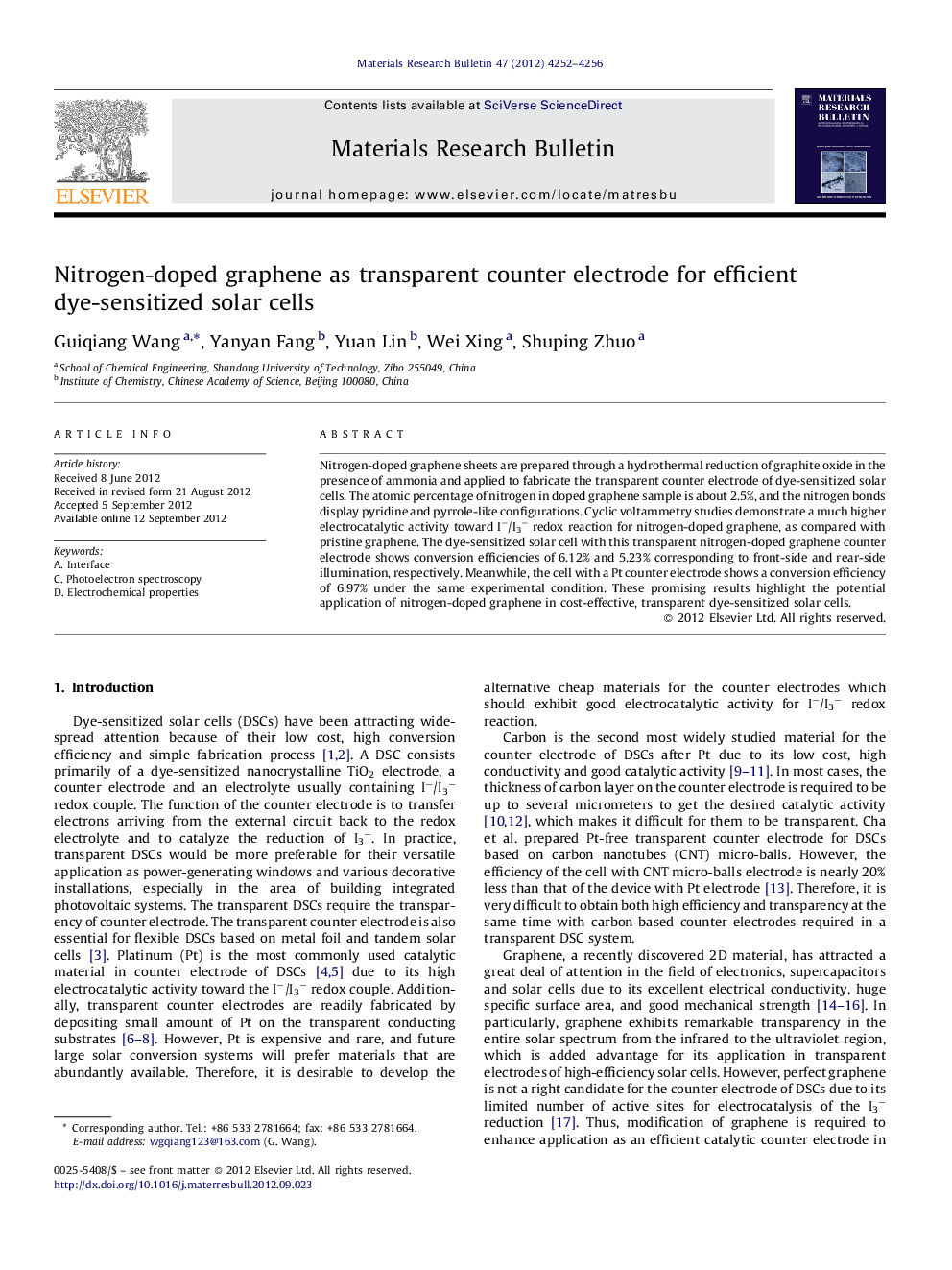| Article ID | Journal | Published Year | Pages | File Type |
|---|---|---|---|---|
| 1489384 | Materials Research Bulletin | 2012 | 5 Pages |
Nitrogen-doped graphene sheets are prepared through a hydrothermal reduction of graphite oxide in the presence of ammonia and applied to fabricate the transparent counter electrode of dye-sensitized solar cells. The atomic percentage of nitrogen in doped graphene sample is about 2.5%, and the nitrogen bonds display pyridine and pyrrole-like configurations. Cyclic voltammetry studies demonstrate a much higher electrocatalytic activity toward I−/I3− redox reaction for nitrogen-doped graphene, as compared with pristine graphene. The dye-sensitized solar cell with this transparent nitrogen-doped graphene counter electrode shows conversion efficiencies of 6.12% and 5.23% corresponding to front-side and rear-side illumination, respectively. Meanwhile, the cell with a Pt counter electrode shows a conversion efficiency of 6.97% under the same experimental condition. These promising results highlight the potential application of nitrogen-doped graphene in cost-effective, transparent dye-sensitized solar cells.
Graphical abstractFigure optionsDownload full-size imageDownload as PowerPoint slideHighlights► NG sheets are prepared through a hydrothermal reduction of graphite oxide. ► The transparent NG counter electrodes of DSCs are fabricated at room temperature. ► Transparent NG electrode exhibits excellent catalytic activity for the reduction of I3−. ► The DSC with NG electrode achieves a comparable efficiency to that of the Pt-based cell. ► The efficiency of rear illumination is about 85% that of front illumination.
